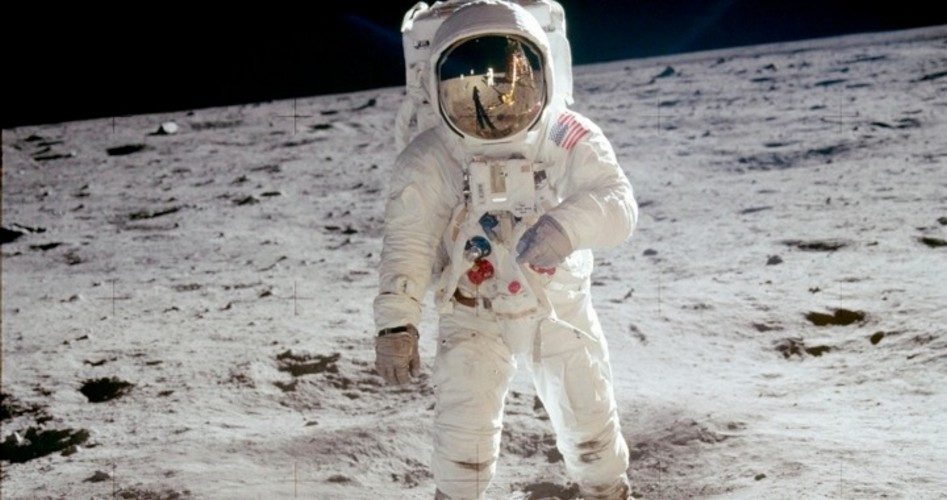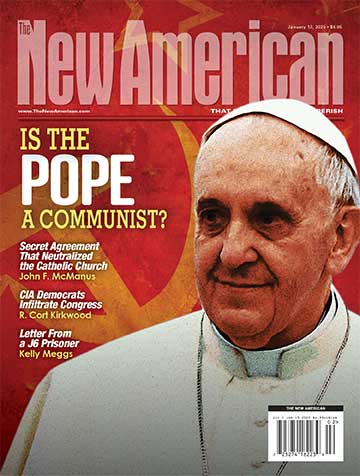
As America offered its official farewells in a memorial service September 12 to Neil Armstrong, the first man to set foot on the moon, the second man on the moon, Edwin Eugene “Buzz” Aldrin, was no doubt recalling that first lunar mission in mid-July 1969. And among the recollections of the event that have been resurrected by the media over the past few days was Aldrin’s decision to mark the historic occasion in perhaps the most appropriate way possible: by taking a few moments to worship God through communion, partaking of the emblems of Christ’s body and blood.
NASA allowed an astronaut to take a small bag of personal items with him on such flights, and amongst his own effects Aldrin, an elder in his Presbyterian church back home in Texas, packed a communion wafer and a small vial of communion wine consecrated by his pastor. A few minutes after he and Armstrong landed on the lunar surface, Aldrin, pilot of the Lunar Module, radioed back to Mission Control in Houston, with this personal message: “I’d like to take this opportunity to ask every person listening in, whoever and wherever they may be, to pause for a moment and contemplate the events of the past few hours and to give thanks in his or her own way.”
As NASA officials, nervous about the backlash over religious expression by the astronaut, blacked out the radio communication with the rest of the world, Aldrin proceeded with his own personal observance, reading aloud the words of Christ from the Gospel of John: “I am the vine, you are the branches. Whoever abides in me will bring forth much fruit. Apart from me you can do nothing” (John 15:5).
Then in the 250,000 miles of silence between him and Earth, Aldrin recalled later in a Guideposts magazine article, he observed the solemn Christian tradition that has connected millions of Christians over the past 2,000 years to their Savior. Opening the package containing the emblems of Christ’s body and blood, “I ate the tiny Host and swallowed the wine,” wrote Aldrin. “I gave thanks for the intelligence and spirit that had brought two young pilots to the Sea of Tranquility.” He added that “it was interesting for me to think: the very first liquid ever poured on the moon, and the very first food eaten there, were the communion elements.”
The young astronaut had intended to share the special moment with the entire world, but officials at Mission Control had second thoughts and “requested that I not do this,” recalled Aldrin. “NASA was already embroiled in a legal battle with Madalyn Murray O’Hair, the celebrated opponent of religion, over the Apollo 8 crew reading from Genesis while orbiting the moon at Christmas. I agreed reluctantly.”
While few over the years have recalled Aldrin’s faithful, solitary witness in space, at least one group continues to commemorate that unique lunar observance. The Washington Post’s religion columnist Sally Quinn noted that the small communion chalice Aldrin had borrowed from Houston’s Webster Church made its way back there, where it is used for an annual Lunar Communion each July 20. “Communion can be celebrated anywhere,” the church’s senior pastor, Mark Cooper, observed this year, “even cramped up in a lunar module on the moon.”
As for O’Hair’s lawsuit over the reading of the Genesis creation account by the Apollo 8 astronauts, the Supreme Court ultimately dismissed the case. But her displeasure no doubt has played a role in subsequent NASA space travelers keeping their faith to themselves. Apparently, however, it did not prevent astronaut Patrick Forrester, a member of the space shuttle Discovery’s crew in 2009, from carrying into space a piece of the plane flown by martyred missionary Nate Saint, who in 1956 was killed with four other missionaries by the Ecuadorian Waodani tribal people whom they were trying to evangelize. Forrester, who left the small piece of the plane’s battery box at the International Space Station, commented that “bringing attention to and renewing interest in missions would be a great result” of his simple gesture.
While groups such as the Freedom From Religion Foundations, which has picked up O’Hair’s campaign against faith, would no doubt take offense, Forrester said that his intent in carrying the relic into space on the NASA space flight was to “honor Nate Saint, the Saint family, and all missionaries around the world.” He added that “I’ve always had a heart for missions. When I visualize what I might do after I end my career at NASA, always in the back of my mind is going into the mission field in some way.”
Photo of Buzz Aldrin on the moon: AP Images

